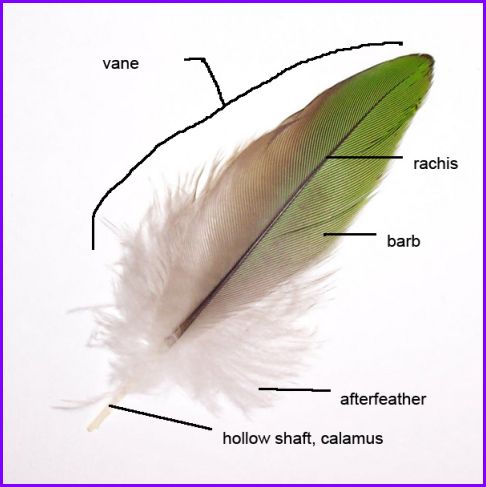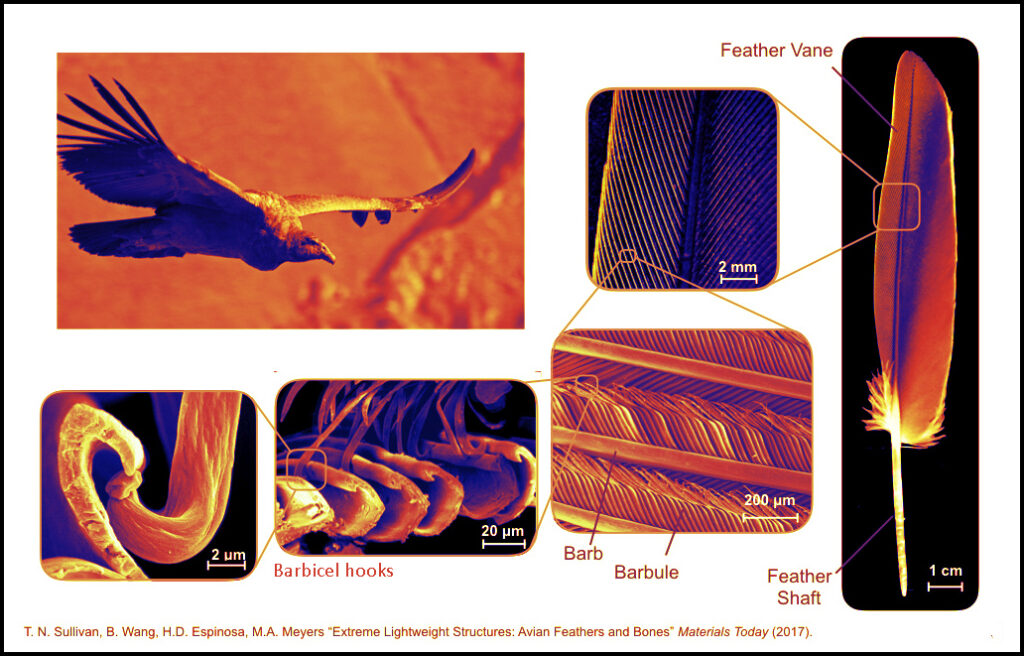
2 July 2010
Before we can go any further on the topic of feathers — and there’s a lot further to go — we need to learn some terminology.
Feathers are made of keratin, just like our hair and fingernails, but they seem a lot more complex because we don’t live with them every day. Fortunately this cool illustration from Wikimedia inspired me to delve into the parts of a feather. And here they are:
Calamus or Quill: (Pronounced KAL-e-mes) The large hollow portion of the shaft that attaches the feather to the bird’s skin or bone. It doesn’t have any barbs on it.
Rachis or Shaft: (Pronounced RAY-kiss) The long, slender central part of the feather that holds the vanes. It’s like the mast that holds the sails.
Vane: The plumed part of the feather that grows from the central shaft. The vanes are like the canvas sails on a mast. Notice that the two vanes of this feather are about equally wide.
Barb: The barbs grow from the rachis. Each barb is a feather within a feather with a little shaft and little barbs of its own called barbules. When viewed as a whole the barbs are the vane.
Barbules (too tiny to show above): Barbules are mini-barbs that grow from the central shaft of each barb. The barbules on one side of the shaft are smooth. Those on the other side have tiny little hooks called barbicels that grab the smooth barbules that lie next to it. When properly preened the barbicels all hook up to their nearby barbules and the feather vane is smooth. See the bottom row in the illustration below.

Afterfeather: The downy, lower barbs. They lack barbicels and don’t “hook up” because they’re used for warmth, not flight.
I’ll write more about feathers in the coming weeks, so you may want to bookmark this blog and refer to it later.
(image from Wikimedia Commons. Click on the image to see the original.)
This is so interesting! I like the “feather within a feather”! Thanks for the neat topic…
Very interesting! The barbules and barbicels lining up and hooking together sound almost like hook and loop tape.
It’s not a long stretch to consider the idea preceding the invention of hook and loop tape came from the feather. After all, if you look back to the old 1950’s cartoons the ideas for things such as toast flying out of the toaster came from real life. It was an aha moment for me when the toast flew out of my toaster. I’m currently reading about feather fiber processing for various uses – I came here to learn what the parts of feathers are called. cheers
Loving this!
I found what appears to be lightly hooking, keratin-like, yellowish, strirated with a sharp tip, broken at the other end some two inches in length. It showed up in my bedroom which I can only surmise was brought in by my cat. Do you think it is a feather bone of a bird?
Might be from a yellow-shafted Northern Flicker
Great
I am always amazed flying birds aloft that a feather, with such whispy lightness, can help keep the largest flying birds aloft!